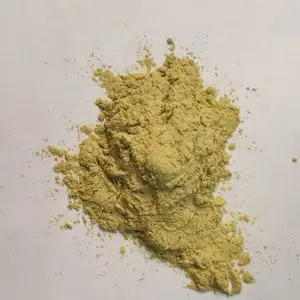Nov . 07, 2024 17:58 Back to list
Innovative Bagging Techniques for Enhancing Mango Packaging and Freshness
The Role of Fruit Bagging in Mango Manufacturing
Mangoes, often referred to as the king of fruits, are cherished for their rich flavor, vibrant color, and nutritional benefits. However, the journey from farm to table is a delicate process that requires careful consideration, especially when it comes to preserving the quality of the fruit during growth and transportation. One crucial technique employed in mango manufacturing is fruit bagging, which offers numerous advantages in ensuring the high quality that consumers expect.
Fruit bagging involves placing protective bags over mangoes as they grow on the tree. This method is gaining popularity among mango growers worldwide, and for good reason. The practice protects the fruit from various external threats that can compromise its quality, including pests, diseases, and environmental factors.
Protection Against Pests and Diseases
One of the primary benefits of fruit bagging is the protection it offers against pest infestations. Mangoes are susceptible to a variety of pests, including fruit flies and various insects that can sap their quality and render them unmarketable. By covering the fruit with bags, growers can significantly reduce the risk of pest damage. This protection is especially vital in regions where pest populations are high and conventional pest control methods may not be sufficient or may involve harmful chemicals.
Additionally, bagging helps protect mangoes from diseases caused by fungi and bacteria. The enclosed environment created by the bags minimizes the chances of infection, ensuring that the fruit remains healthy as it ripens. Healthy mangoes not only fetch a better price in the market but also contribute to consumer satisfaction, as they are less likely to contain harmful residues.
Environmental Protection
Another significant advantage of fruit bagging is its ability to shield mangoes from harsh environmental conditions. Factors such as excessive sunlight, rainfall, and wind can adversely affect the quality of the fruit. For instance, direct sunlight can lead to sunburn on mangoes, causing blemishes that diminish their cosmetic appeal and, in turn, their market value. Fruit bags create a buffer against these conditions, allowing mangoes to develop color and flavor without the risk of damage.
fruit bagging in mango manufacturer

Moreover, bagging can help control humidity around the fruit, creating an optimal microclimate that promotes healthy growth. This controlled environment can lead to better sugar content and overall flavor, characteristics that mango lovers eagerly seek.
Reduced Chemical Use
As consumers become more health-conscious and demand organic produce, fruit bagging presents a more sustainable approach to mango farming. Traditional pest control often relies on chemical pesticides, which can have harmful environmental consequences and can leave residues on the fruit. By using bags to deter pests and diseases, growers can reduce their reliance on chemical treatments. This shift not only meets consumer demand for safer, organic products but also promotes a healthier ecosystem.
Better Marketability
The result of effective fruit bagging is not only higher quality mangoes but also improved marketability. Fruits that are well-protected yield fewer blemishes and defects, thus enhancing their visual appeal. In the world of fresh produce, appearance plays a crucial role in consumer purchasing decisions. Grocers and retailers are more likely to purchase mangoes that look attractive and are of high quality, benefiting both growers and sellers.
Conclusion
In conclusion, fruit bagging in mango manufacturing is a beneficial practice that addresses various challenges faced by mango growers. By protecting the fruit from pests, diseases, and environmental factors, bagging plays a vital role in ensuring that mangoes remain high-quality and market-ready. As the demand for healthy and sustainable produce continues to rise, fruit bagging will likely become an essential technique in the mango industry, promoting not only better fruits but also healthier farming practices. This method not only enhances the profitability for growers but also ensures that consumers receive a delicious and safe product.
-
Pollen Peach Tree for Pure Pollination and High-Quality Peach Pollen
NewsJul.30,2025
-
Premium Cherry Pollen for Pure Pollination & Different Types
NewsJul.30,2025
-
Artificial Pollination Solutions for Various Plant Pollen Types
NewsJul.29,2025
-
Artificial Pollination Solutions for All Plant Pollen Types
NewsJul.29,2025
-
Premium Plant Pollen for Pure Pollination & Pollen Block Solutions
NewsJul.29,2025
-
Artificial Pollination Solutions for Efficient Crop Yields
NewsJul.28,2025